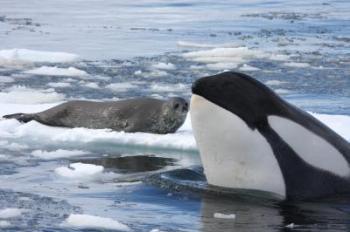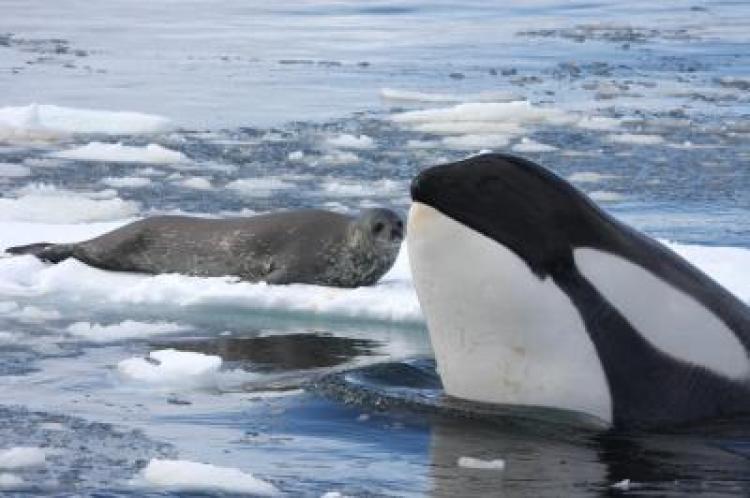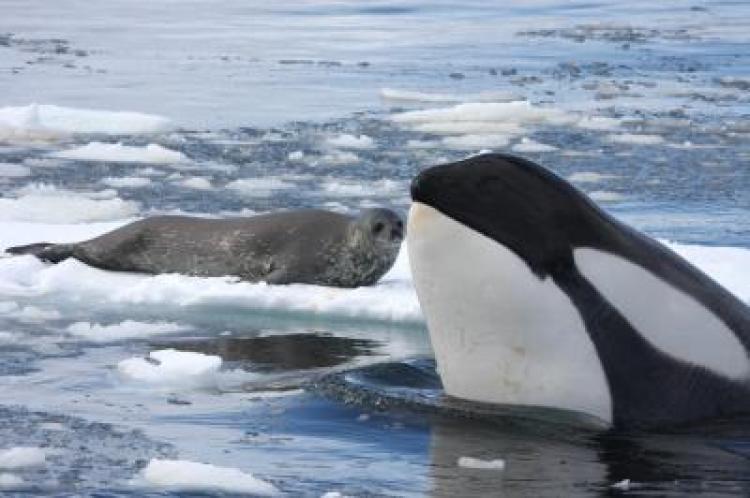Killer whales in the Antarctic prefer to cooperatively hunt a particular species of seal over any other type of prey, according to a NOAA Fisheries Service study published in Marine Mammal Science.
National Oceanic and Atmospheric Administration scientists from the Southwest Fisheries Science Center in La Jolla, Calif., studied orcas’ group hunting off the western Antarctic Peninsula in January 2009.
John Durban and Robert Pitman observed that the hunters specifically target Weddell seals, although other prey species like crabeater seals are often present in larger numbers.
“These killer whales would identify and then attack Weddell seals almost exclusively, even though they made up only about 15 percent of the available seal population,” Pitman in a press release.
The researchers found that whales in groups of up to seven individuals purposefully charge ice floes to break them up or create waves to reach the seals more easily or even wash them into the water.
The hunters appear to use their tails and blowholes to create turbulence and bubbles in the water that may confuse the seal and stop it from escaping back onto the ice. By pulling the seal underwater by its hind flippers, the whales tire out the prey and share the killings once it is exhausted.
During one hunting episode, the whales seemed to have actually skinned the seal and dismembered the body before they consumed it, suggesting that the cooperative hunting methods are complex in nature.
According to a previous study co-authored by Durban and Pitman, this behavior could be specific to a distinct population called “pack ice killer whales” that may even be a classified as a separate species. The behavior has only been recorded on a few other occasions.
The details of the whale’s group behavior will be broadcast by the BBC in a documentary called Frozen Planet.
The Epoch Times publishes in 35 countries and in 19 languages. Subscribe to our e-newsletter.






